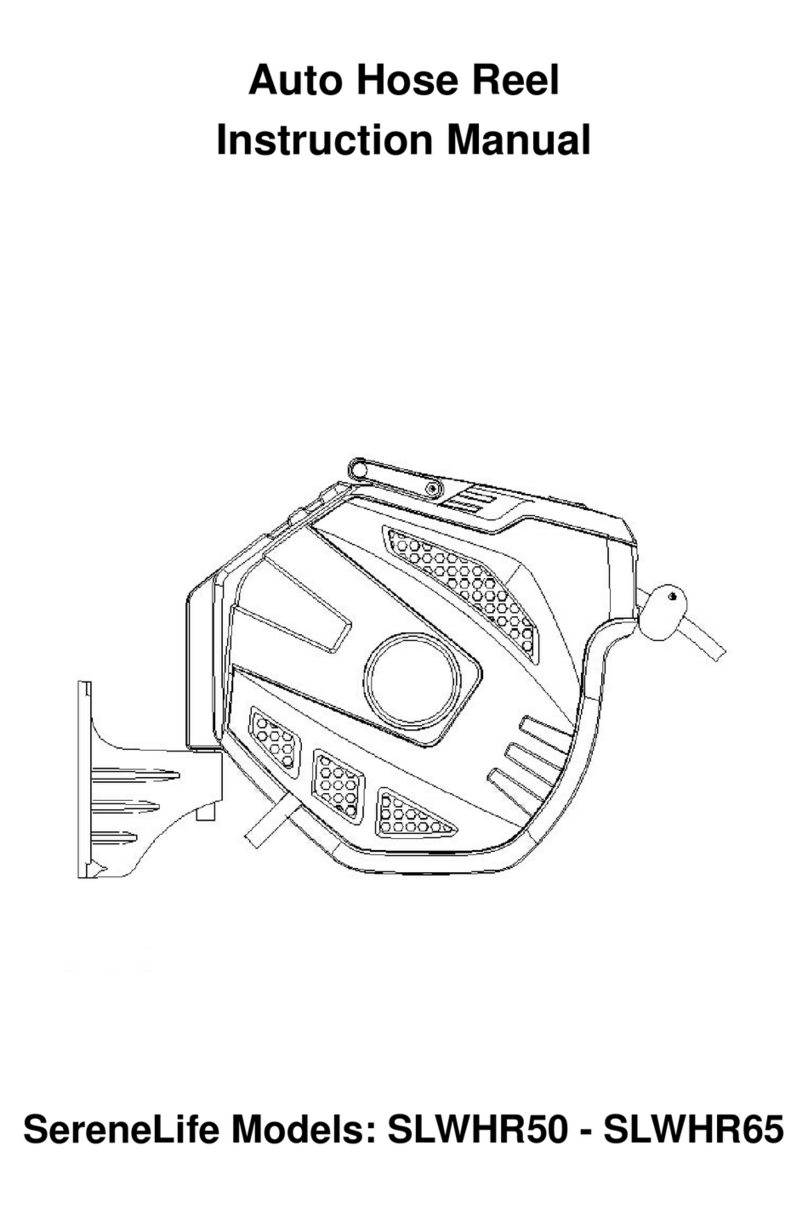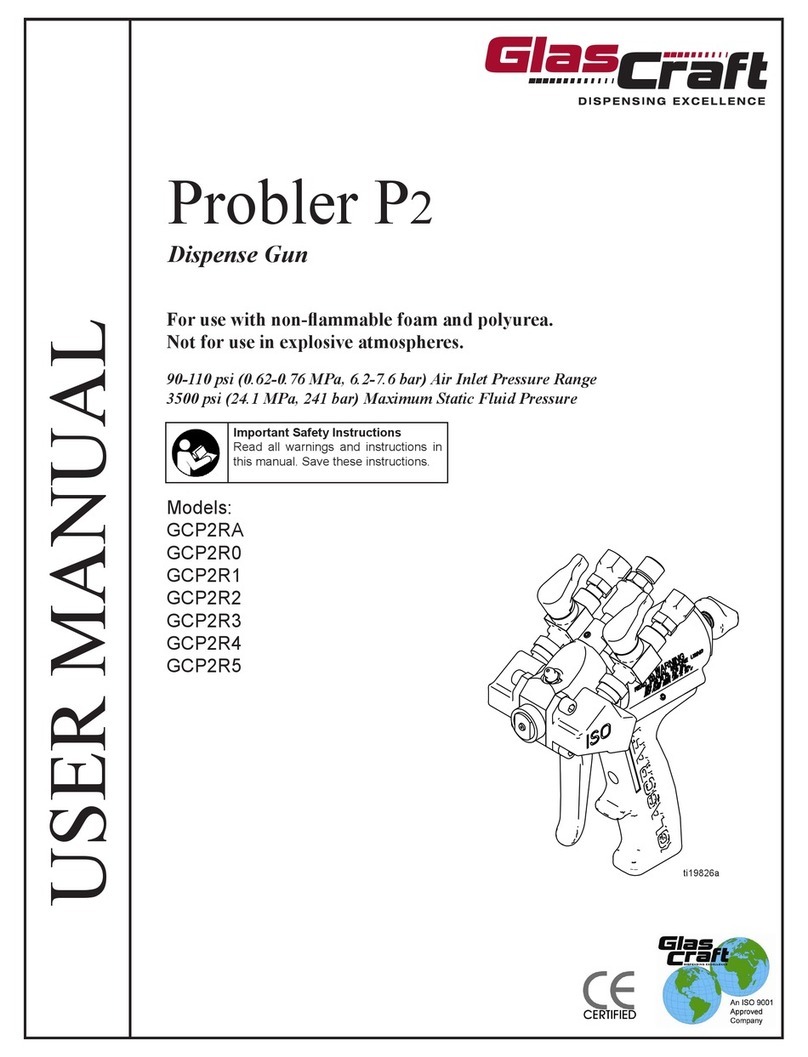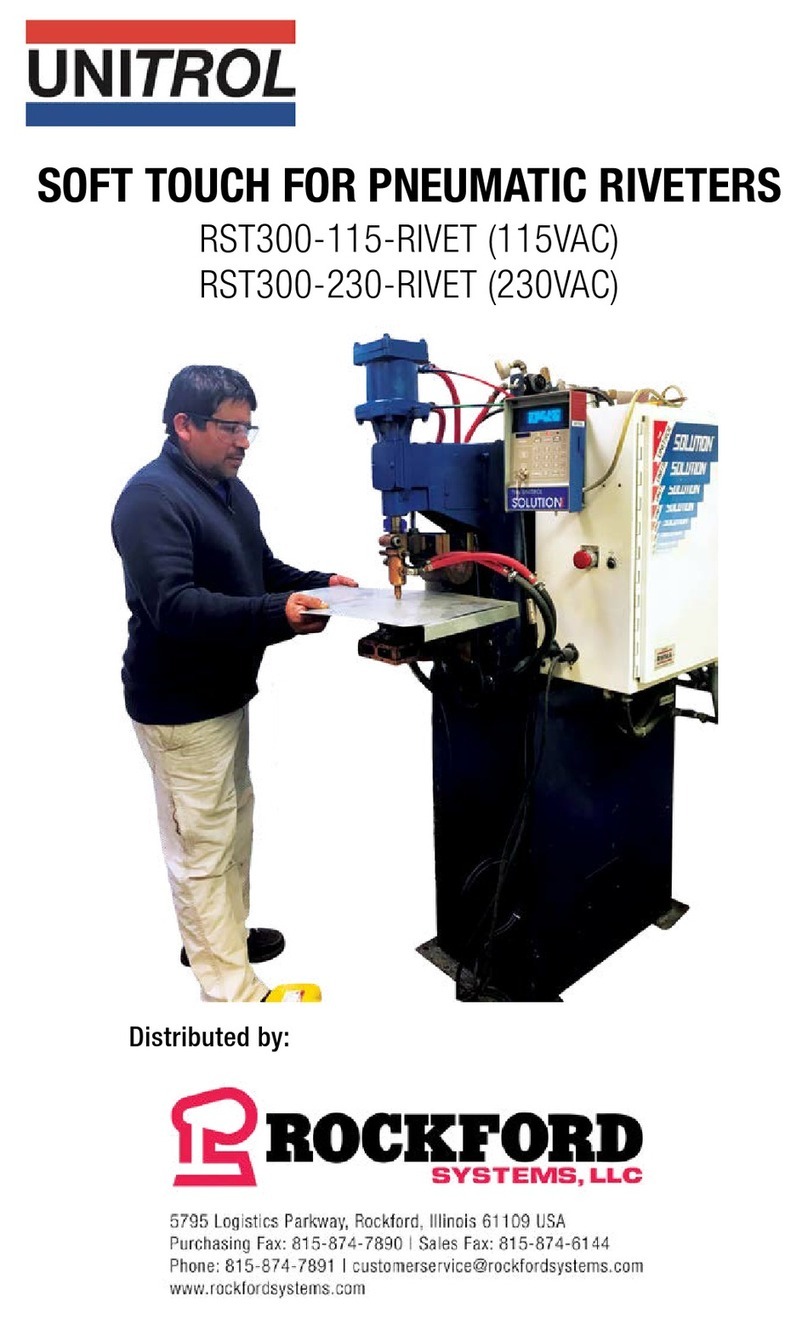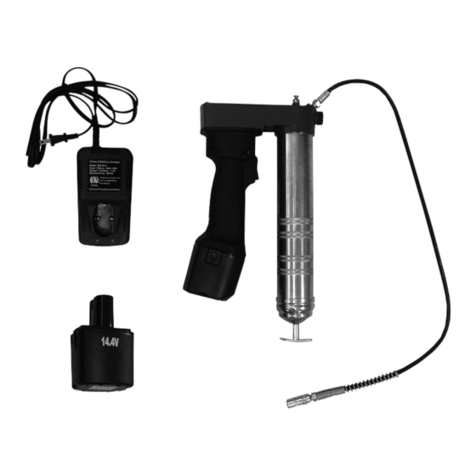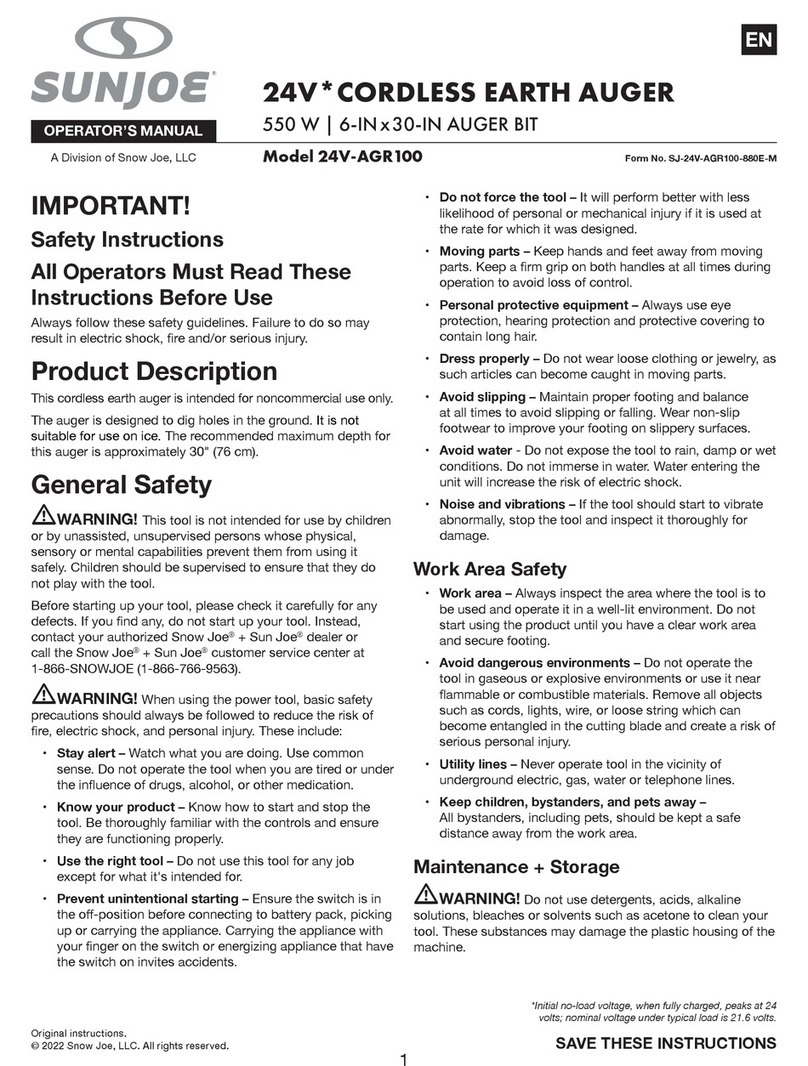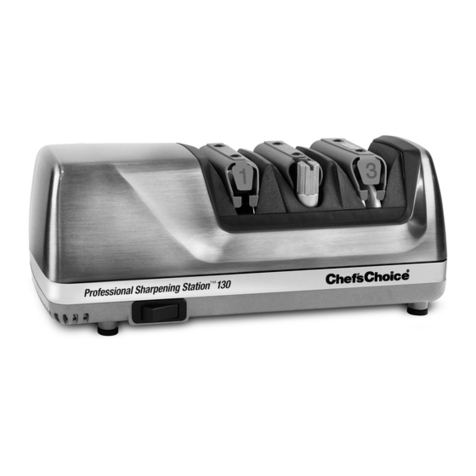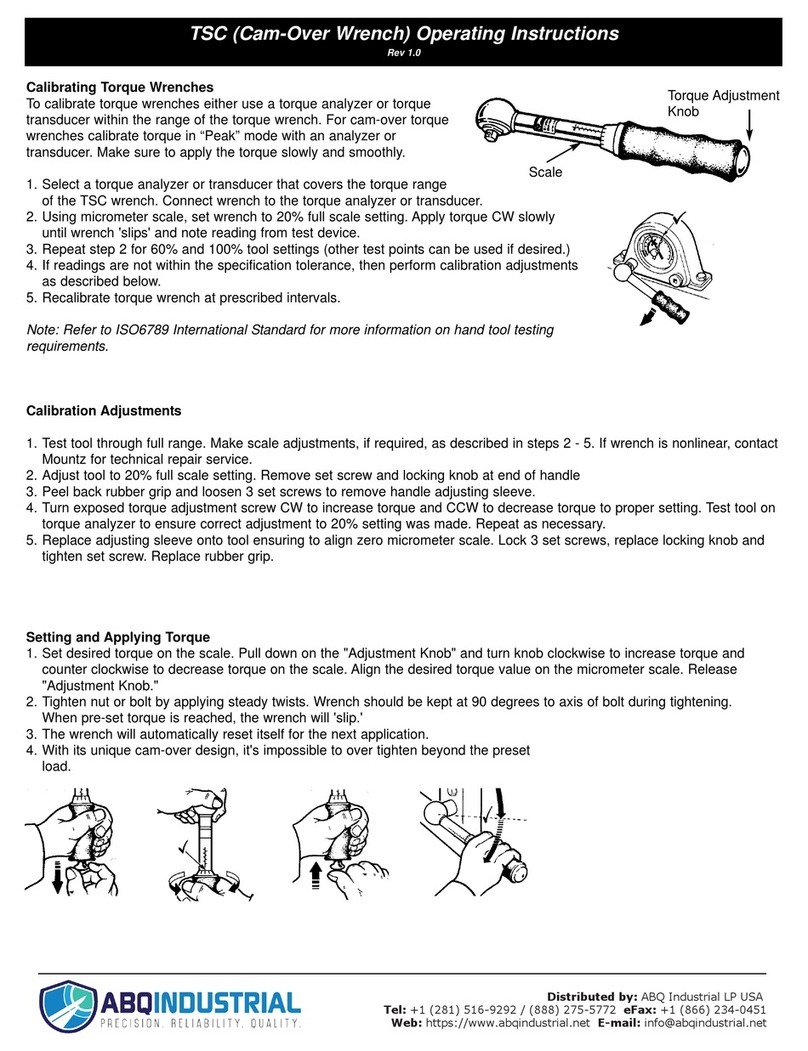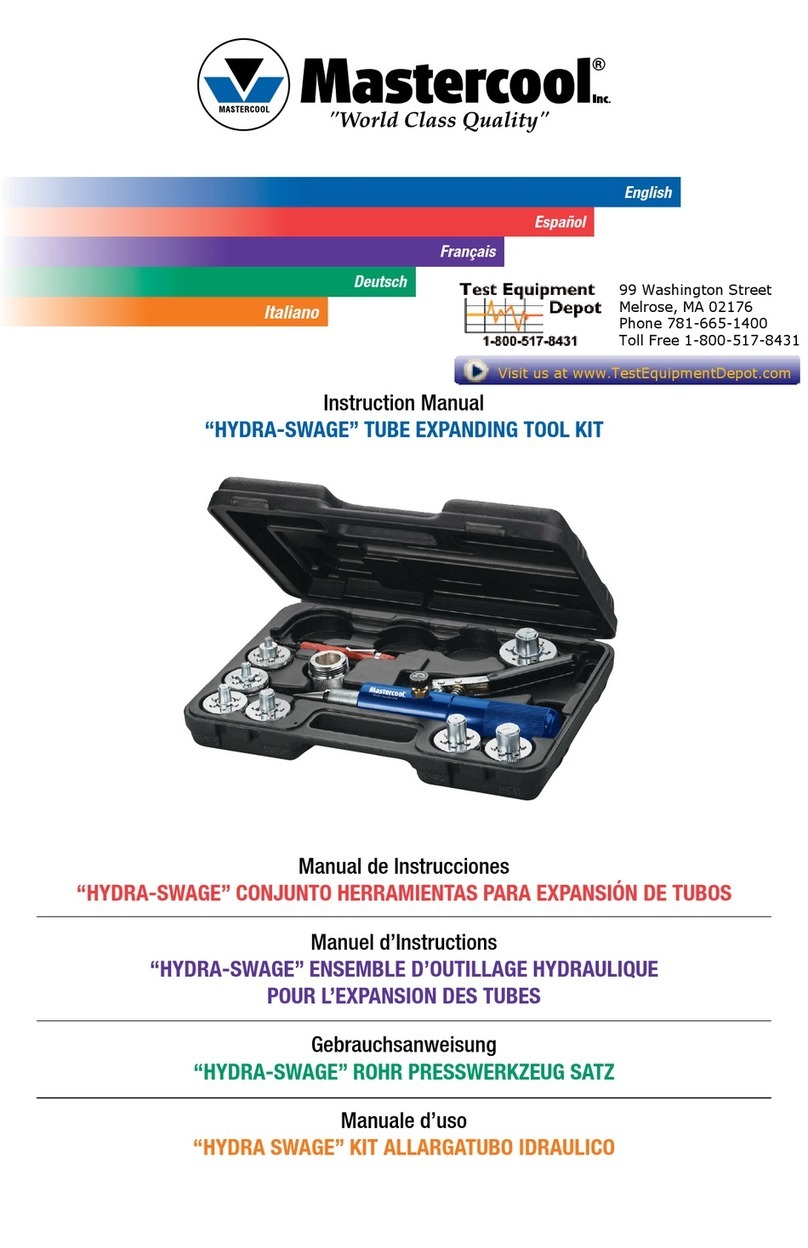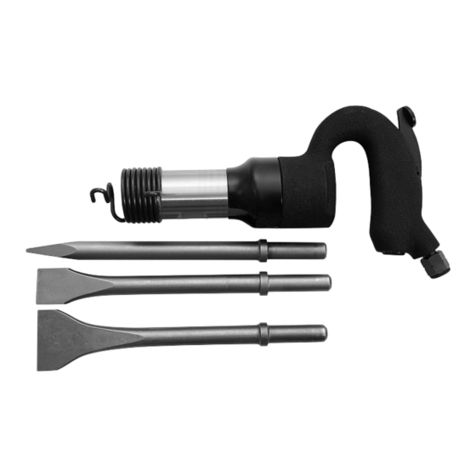C-SCOPE XD User manual

Instruction Manual
Cable Avoidance Tool
Cable Avoidance Tool XD
Signal Generator SG-A
Signal Generator SG-V
CABLE AVOIDANCE TOOLS

Beware of multiple services. T e C.Scope Cable Avoidance Tool will not always
indicate close services, eit er side by side or one above t e ot er.
Do not use t e equipment in areas w ere azardous gases may be present.
C eck for underground services before using t e eart stake.
ALWAYS
EXCAVATE
WITH CARE
T e C.Scope Cable Avoidance Tools locate services radiating a detectable field.
T ere may be some services t at do not radiate and cannot be located.
Do not use t e equipment outside of t e temperature range -10˚C to +50˚C as t e
batteries may cease to function adequately.
Geograp ical conditions suc as ills and mountains can effectively screen radio
signals and prevent a detectable ground current.
T e C.Scope Cable Avoidance Tool alone will not always locate every conductor so
always use a Signal Generator.
T e C.Scope Signal Generator leads must not be connected directly to a live service.
System performance may be impaired by unusually strong electromagnetic fields.
WARNINGS
Copyrig t © 2004 C.Scope International Ltd. All Rig ts Reserved.
C.Scope International Ltd make every effort to ensure t at t e information we provide about our products and t eir use is correct. We do not accept responsibility for
injury, damage, or consequential loss arising from t e use of our products. Local, national and international requirements and regulations must take preference.

Contents
Warnings Inside Front Cover
Features
Cable Avoidance Tool (and XD Model) 1
Signal Generator (SG-A and SG-V Models) 2
Locator Operating Modes
Power 4
Radio 5
Generator 6
Using t e Locator
Batteries 7
Holding t e Locator 8
Searc ing 9
Pinpointing 10
Tracing 11
Using t e Signal Generator 12
Batteries 13
Direct connection 14
Street lig ting 16
Signal Clamp/ Injector 17
Searc ing 18
Tracing 19
Induction 20
Searc ing 21
Multiple Services 23
Inductive Sweep 24
Non-Metallic Pipe Tracing 25
Sonde 26
Plastic Pipe Tracer 28
Dept Measurement 30
Sonde/ Plastic Pipe Tracer 32
Function c ecks 33
Maintenance 37
Specifications
Cable Avoidance Tool 38
Signal Generator 39
Support Services 40

Digital display
Dept measurement button
(XD model only)
Detac able loud speaker
On/ Off switc
Sensitivity control
3 position mode switc
Battery compartment
Replaceable wear foot
T e C.Scope Cable Avoidance Tool (And XD Model)
Digital display
Mode selected:
Generator Power Radio
(s owing
frequency)
Dept display (XD Model only)
Signal strengt bar display
Battery condition indicator
1

On/Off switc
Loud/Mute switc
Pulsed/Continuous output switc
Hig power switc
Low power switc
Batteries
Direct connection socket
Auxiliary eart lead socket
Accessory tray
T e C.Scope Signal Generator (SG-A and SG-V Models)
Digital display
(SG-V only)
Battery condition indicator
Mute/loud setting
Power output level indicator
Induced or connected mode indicator
Signal strengt bar display
2

T e C.Scope Signal Generator (SG-A and SG-V Models)
Accessory tray
Accessory tray olding clips
Eart stake
Direct connection leads
Crocodile clips
Auxiliary 10m eart lead
Connection magnet
3

NOTE Generally t ese services s ould be detectable using t e Radio or Generator modes.
In Power Mode t e locator detects power signals. T ese power signals are present on all current carrying electricity
cables alt oug not all are detectable. T ese power signals may also flow along ot er buried conductors suc as metal
gas and water pipes.
Limitations of Power Mode
Not all electricity cables can be found using t e Power mode. Here are t e most important examples of
electricity cables t at may not be detectable in t e Power mode:
● Street lig ting cables. W en t e lig ts are off, no current flows and so no power signal is created.
● Supplies to buildings or plant using very little or no electricity will not ave a detectable power signal.
● Pot-ended or capped cables. T ese will never ave any current flowing t roug t em but are possibly still live.
● Disused or abandoned cables.
● A few ig voltage electricity cables. T ese can be “well balanced”, electrically and t erefore radiate little
or no Power signal.
● Direct current cables (suc as t ose found on railway systems). T ese do not create t eir own Power signals.
● Cables more t an 3 metres deep.
Locator Operating Modes: Power Mode
WARNING Locators can only detect services radiating a detectable electromagnetic signal.
T ere may be some services t at do not radiate t ese signals and cannot be located.
WARNING Absence of Power signal does not mean t e service is not live.
4

In Radio mode, t e locator detects signals from radio transmitters. T ese signals flow t roug t e ground and will tend to
follow t e line of least resistance suc as a buried metallic service. W en t is appens t e service can often be detected
by using t e locator in Radio mode.
Limitations of Radio Mode
● Not all services will be detectable in Radio mode.
● A strong Radio signal present on one service may be masking a weaker Radio signal present on an adjacent service.
● It is not normally possible to determine WHAT t e service is in Radio mode, only it’s position.
● Radio signals do not favour one utility over anot er.
● T e dept of t e buried service CANNOT be judged by t e strengt of t e radio signal alone.
● Normally it is only possible to detect Radio signals present on services up to 2 metres deep.
● A s ort service may not ave enoug signal to be detected.
Locator Operating Modes: Radio Mode
NOTE Most buried metallic services not found in Radio mode s ould be detectable by using Generator
mode wit a Signal Generator.
WARNING Locators can only detect services radiating a detectable electromagnetic signal.
T ere may be some services t at do not radiate t ese signals and cannot be located.
5

Locator Operating Modes: Generator Mode
In Generator mode t e locator detects conductors radiating a
signal applied by t e Signal Generator. T e Signal Generator
provides a way of sending a known signal along buried metallic
services w ic can t en be detected using t e locator.
By detecting t is signal it is possible to locate, trace and
identify t e pipes or cables t at may be carrying it.
T ere are TWO basic met ods by w ic t e Signal Generator
signal can be applied to buried services:
Direct Connection - T e Signal Generator is attac ed directly
to t e service using eit er t e Direct Connection Leads or one
of t e accessories available for use wit t e Signal Generator
suc as t e Signal Clamp of Signal Injector.
Induction - T e Signal Generator can induce a signal onto a
buried metallic service remotely from t e surface wit out t e
need to p ysically connect to t at service.
Limitations of Generator Mode are covered in Using t e ‘Signal
Generator’ section of t is manual.
Direct Connection
Induction
WARNING Locators can only detect services radiating a detectable electromagnetic signal.
T ere may be some services t at do not radiate t ese signals and cannot be located.
6

Locator Battery C eck
Switc t e locator on by pulling up on t e On/Off trigger positioned
on t e underside of t e andle. T e locator s ould emit a clear audible
battery c eck tone for one second and t e display s ould come on.
C eck t e battery level indicator in t e bottom left and corner of t e
display. If t ere is only one segment or no segments of t e indicator
filled in t en t e batteries will need to be renewed before locating work
can begin.
C anging Locator Batteries
Pus t e two clips back to release t e battery compartment door. Remove ALL EIGHT used batteries and replace wit
new ones. Be careful to insert t e new batteries t e correct way round in t e older. Replace t e older in t e battery
compartment making sure t at t e two terminals on t e older make contact wit t e two terminals wit in t e battery
compartment. Close t e battery compartment door securely.
Using t e Locator: Batteries
Battery levels
WARNING Do not c ange batteries in confined spaces w ere gas may be present.
NOTE Only use alkaline AA (LR6) size batteries. Dispose of t e used batteries safely in accordance wit local
regulations.
7

W en in use t e locator s ould always be eld uprig t.
NEVER swing t e locator suc t at it moves away from
t e vertical.
Your middle or little finger s ould be used to squeeze, and
old on, t e On/Off trigger.
Your index finger will t en be free to adjust t e sensitivity control.
Using t e Locator: Holding t e Locator
8

T ere are t ree stages to t e locating process; searc ing, pinpointing and
tracing
1. Turn t e function switc to t e appropriate mode
2. Hold in t e On/Off trigger. T e locator s ould emit t e audible battery
test tone and t e digital display s ould come on. C eck t e battery level
indicator to confirm t e batteries are usable.
3. Rotate t e Sensitivity control clockwise to its maximum setting as
indicated by t e arrow on t e control.
4. Carry out t e searc using a grid pattern as s own in t e diagram.
Walk slowly and keep t e locator uprig t at all times and stationary by
your side.
5. As you approac t e area in w ic t ere is a signal t e locator will emit
an audible response and s ow a visual response on t e bar display.
6. Keep walking until t e audible and visual responses disappear.
Using t e Locator: Searc ing
NOTE T is searc tec nique applies only to t e Power and Radio
modes. See ‘Using t e Signal Generator’ for t e correct searc
pattern w en using Generator mode.
NOTE Sometimes t e locator will give an audible response and
strong (full scale) visual response across t e w ole of t e searc
area. In t is case turn t e sensitivity down slig tly and repeat t e
searc using t e same grid pattern.
9

Having found t e presence of a signal t e next stop is to pinpoint
t e source. T e closer t e locator is to t e signal source t e
stronger t e response.
To Pinpoint a Signal
1. Keeping t e locator vertical, walk t roug t e area of t e signal
response. If t e visual response goes off t e scale t en stop,
reduce t e sensitivity of t e locator slig tly before continuing.
2. T e widt of t e signal response will begin to s rink as t e
sensitivity is reduced. Once t e sensitivity is reduced enoug t en a
clear peak response will be seen on t e bar display as t e locator
traverses t e service. T e locator is positioned directly above t e
buried service w en t e bar display is at its ig est (peak) reading.
3. Carefully rotate t e locator over t e peak reading until t e visual
response falls to a minimum level. T e locator will now be roug ly
IN LINE wit t e direction of t e buried service.
4. Mark t e position of t e buried service.
Using t e Locator: Pinpointing
NOTE T e amount of sensitivity adjustment needed to pinpoint a service can vary depending on t e mode being
used, t e signal strengt and t e service dept .
10

Using t e Locator: Tracing
Having pinpointed a service it s ould now be possible to trace it’s route.
1. Carefully follow t e direction of t e signal olding t e locator at rig t angles
to t e line of t e signal. It is necessary to constantly ‘slice’ t e locator from side
to side in order to be sure of still being over t e peak signal response.
2. Stop and mark t e position of t e signal at regular intervals. As more marks
are recorded t e precise direction of t e service will become more apparent.
Lost Signals
T is can be because of a curve, or bend in t e route, c ange in dept of t e
service, a T connection or t e end of t e service.
Finding Lost Signals
1. Locate in a circle at least 1metre around t e point w ere t e signal was lost.
T is s ould locate t e service if it as simply c anged direction s arply or ‘T’d’
into anot er service.
2. If you find not ing t en increase t e sensitivity and repeat t e circle. T is
s ould find t e service if it as continued but at a greater dept .
NOTE It may be necessary to readjust t e sensitivity to maintain t e
optimum response.
NOTE After tracing return to t e original searc grid to searc for
furt er buried services.
WARNING Never rus t e tracing process. Small and unexpected c anges in t e service’s route will be missed if
care is not taken to follow t e signal’s pat every step of t e way.
11

12
Using the Signal Generator
Using the locator in Power and Radio modes will only allow you to locate and mark the position of buried services that
are producing a Power signal or re-radiating a Radio signal.
Use of the Signal Generator should enable most, if not all, of the remaining buried metallic services to be detected and
traced.
his section explains the various ways in which the Signal Generator can be used.
It also shows how to use those accessories that allow the Signal Generator to be directly connected to specific services.
Direct Connection - Physically connecting the Signal Generator to a service is the most effective way to transfer the
signal onto that service and the best way to trace the route of that service.
Signal Clamp - he Signal Clamp is an accessory that allows the Signal Generator signal to be applied to a specific cable
without having to make electrical contact with that cable. Although the Signal Clamp is not physically fixed to the cable
we still consider it as a Connection method because it is using the Signal Generator in Connection mode.
Signal Injector - he Signal Injector is an accessory that allows the Signal Generator signal to be safely applied to an
electrical system via a conventional 3-pin power socket. his signal will then be detectable on the buried supply cable
outside the building.
Induction - Induction is a method of applying a signal to a service to which there is no direct access.
NO E he locator should always be handled and operated according to the instructions shown in the
‘Using the Locator’ section unless specifically shown otherwise in this section.

Using the Signal Generator: Batteries
Battery Check
Switch the Signal Generator on by pressing the On/Off switch. he Signal Generator should emit a loud continuous tone.
If the batteries need replacing an interrupted tone will be heard.
During use, the Signal Generator will also warn the locator user of low battery status by altering its normal continuous
or pulsed signal output to a distinct interrupted signal output.
SGV only
Check the battery level indicator in the bottom left hand corner
of the display. If there is only one segment or no segments of
the indicator filled in then the batteries will need to be renewed
before locating work can begin.
Changing the Batteries
● Remove the accessory tray.
● Undo the two round knurled retaining screws situated on the underside of the Signal Generator holding the battery cover.
● Remove ALL FOUR used batteries and replace with new ones.
● Be careful to insert the new batteries the correct way round in the compartment as indicated on the case.
● Replace the battery cover being careful to not over tighten the retaining screws.
● Replace the accessory tray.
WARNING Do not change batteries in confined spaces where gas may be present.
NO E Dispose of the used batteries safely in accordance with local regulations.
NO E Only use alkaline D (LR20) size batteries
SGV only
13

Using the Signal Generator: Direct Connection
he direct connection leads and earth stake that are supplied with the Signal Generator
are used to apply a signal to any metal pipe at a suitable access point such as a valve,
hydrant point, stop cock or exposed pipe length.
1. Plug the direct connection leads into the Signal Generator
connection socket.
2. Attach the red lead to the pipe at your point of access using
the crocodile clip. Ensure that you have a secure and clean grip
on the pipe with the crocodile clip.
3. urn the Signal Generator on.
WARNING Never connect directly to electrical services.
WARNING You may need to seek permission from the service owners before connecting on to some buried services.
NO E he type of metal that the pipe is constructed from or it’s use will have little effect on its traceability.
NO E If it is not possible to get the crocodile clip to grip the pipe then use the magnet on the back of the clip.
1. 2.
14

Using the Signal Generator: Direct Connection
4. Place the Earth Stake in the ground (having first searched the area
for buried cables with the locator).
he ideal position for the Earth Stake is at right angles to the
assumed line of the pipe and the full length of the direct connection
leads away from the pipe access point.
5. Connect the black earth lead to the Earth Stake (or the alternative
earth point). If your earth point is too far away from the pipe access
point for the black earth lead to reach then use the yellow 10 metre
auxiliary earth lead instead.
6. As the earth lead is connected to the earth stake the audible
signal from the Signal Generator should change in tone. he
greater the change in tone, then the better the signal will be on
the metal pipe.
If there is no change of tone at all it may be that some dirt, rust
or paint on the pipe is preventing the direct connection lead from
making a good contact with the pipe. Alternatively it may be that your
earth point is at fault. Change the position of the earth stake
or use an alternative earth point.
NO E If it is not possible to use the Earth Stake use a nearby metal fence post, manhole cover or gully cover. DO
NO use something that may have another metallic service attached to it, such as a metal street lighting column.
NO E If the Signal Generator tone does not change then there is no signal being transferred onto the service.
SG-V only
he SG-V Signal Generator will also give a visual representation of the quality of the connection in addition to the audible
tone change. he greater the response on the display then the better the signal will be on the pipe.
15

Using the Signal Generator: Direct Connection
Direct Connection to a Street Lighting Column
he position and route of street lighting or car park lighting
cables can be determined by using a Signal Generator and the
pipe connection method.
Follow the same rules as for connecting the Signal Generator
to a metal pipe except attach the red direct connection lead to
the OU SIDE of the lamp column.
WARNING NEVER open the lamp column door to gain access to the cables, this is dangerous and not necessary.
NO E Make sure that the direct connection crocodile clip is not insulated from the metal of the column by paint.
NO E If the column is concrete attach the crocodile clip to the metal surround of the access door.
16

Using the Signal Generator: Signal Clamp/ Injector
Signal Clamp
1. Plug the Signal Clamp into the connection socket on the Signal Generator.
2. urn the Signal Generator on.
3. Check that the jaws of the clamp are clean. Place the Signal Clamp AROUND the cable
making sure that the jaws are able to fully close. he audible signal from the Signal
Generator should change in tone indicating that the clamp jaws have closed correctly.
WARNING NEVER attempt to place the Signal Clamp around electricity cables
that are deliberately suspended out of reach. hey may be unsheathed or unprotected cables.
NO E he Signal Clamp cannot apply a signal to a cable that is not earthed at both ends such as abandoned
cables that have been cut off where they appear above ground or small cables supplying unearthed equipment.
WARNING DO NO use the Signal Injector on systems with voltages in excess of 240 volts AC. Domestic systems
will normally be below this voltage.
NO E On two wire Protective Multiple Earth (PME) systems it may be necessary
to also provide an external earth using the yellow 10 metre Auxiliary Earth Lead and Earth Stake.
NO E Always check with the owners that it is acceptable to interrupt the supply before connecting the Signal Injector.
NO E Using the Signal Injector may cause the system protection to trip.
Signal Injector
1. Plug the Signal Injector into the connection socket on the Signal Generator and an
electric outlet.
2. urn the Signal Generator on.
3. urn the socket on. he audible tone from the Signal Generator will drop in pitch to
indicate a successful connection.
17
This manual suits for next models
4
Popular Tools manuals by other brands
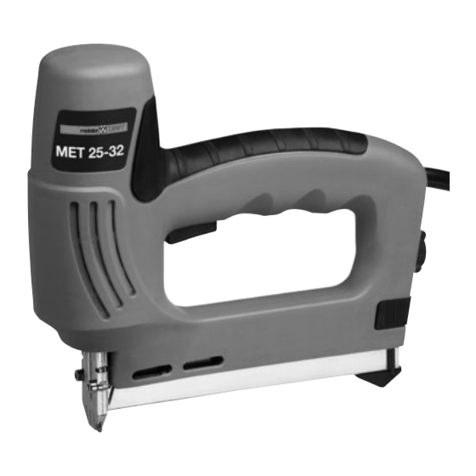
MEISTER CRAFT
MEISTER CRAFT MET 25-32 Original operating instructions

Master cool
Master cool 71700 operating instructions
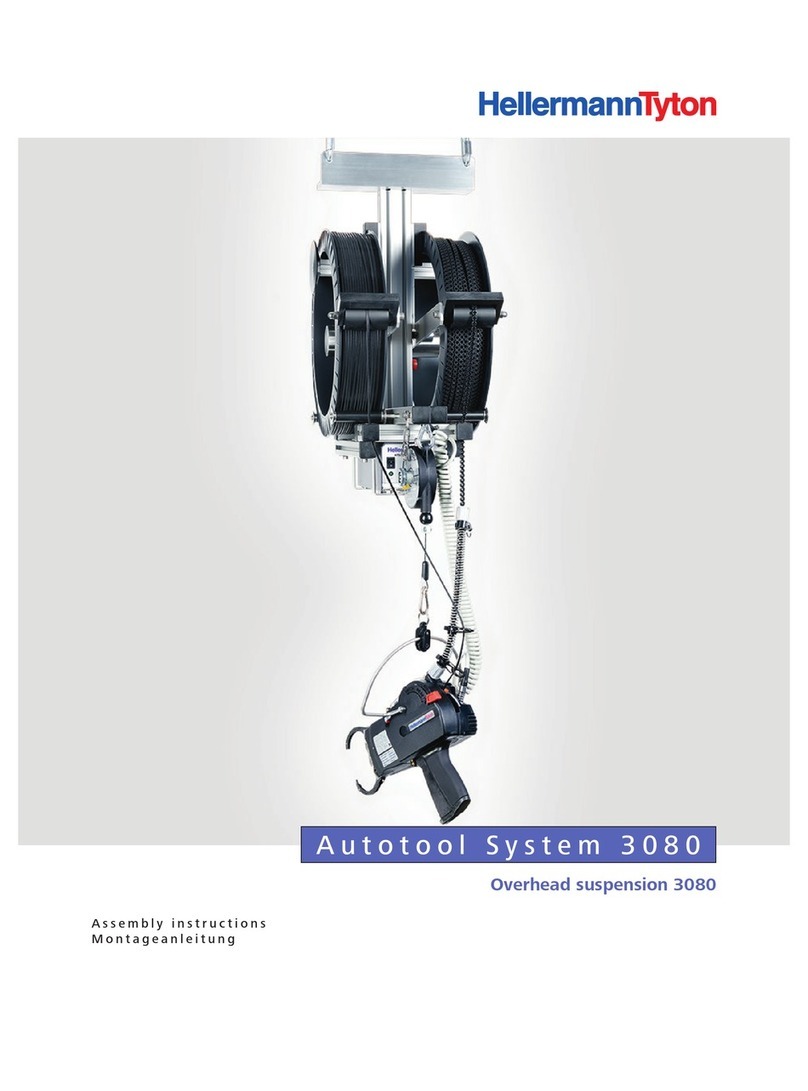
Hellermann Tyton
Hellermann Tyton Autotool System 3080 Assembly instructions
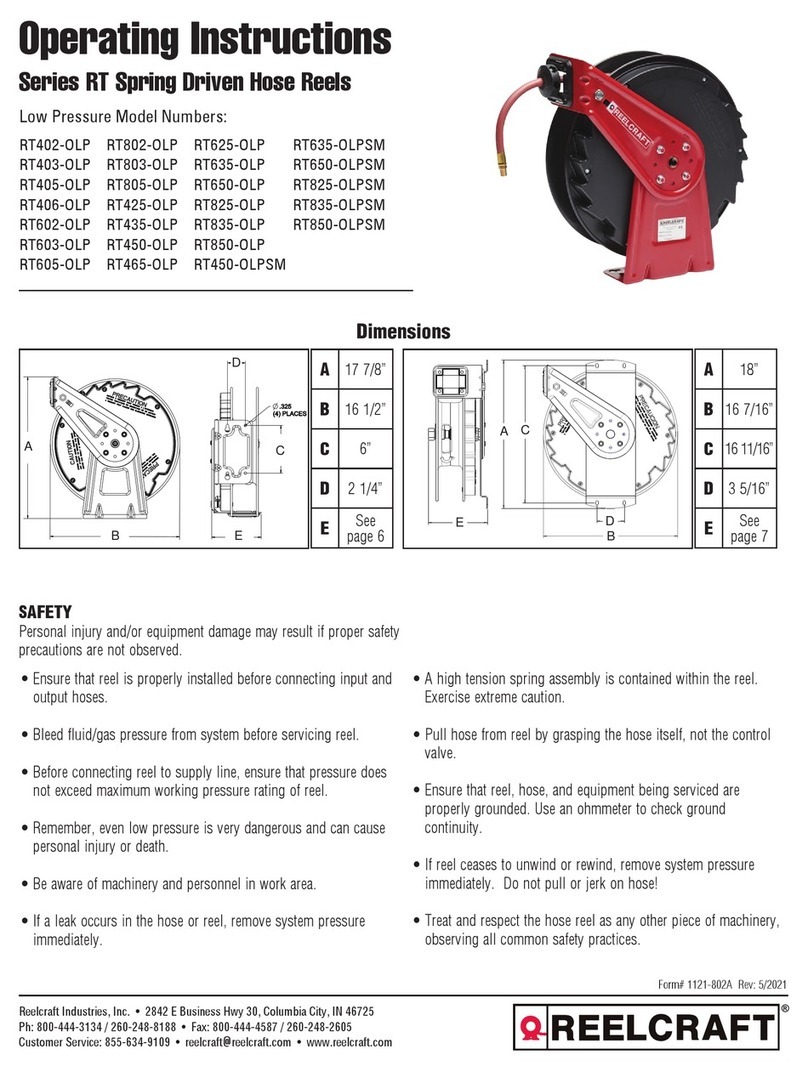
Reelcraft Industries, Inc.
Reelcraft Industries, Inc. RT Series operating instructions

Power Fist
Power Fist 8823494 user manual

PROPOINT
PROPOINT 18 GAUGE AIR BRAD NAILER user manual
